Mount St. Joseph’s Girls’ College Excels
May 26, 2020We are proud to announce that Mount St. Joseph Girls’ College Altona, Victoria was recently named winner of the 2020 Schools that Excel for non-government schools in Melbourne’s West.
This award was based on the outstanding VCE/ATAR results over the past 10 years.
You can read more about it in this article from The Age newspaper below:
‘Schools that Excel: Winners in the west’ article
Nicole Magee
Marketing & Communications
Mount St. Joseph Girls’ College
National Sorry Day 2020
Sorry Day has become part of the calendar of commemorations that challenge us to reflect on our colonial history, as well as our present-day attitudes to our Indigenous brothers and sisters.
The formal National Apology given by then Prime Minister Kevin Rudd on 13 February 2008, brought a great sense of catharsis, relief, satisfaction, as though at last, the wrongs of the past were being exposed and confessed. As I look back on the You Tube video of that day on 13 February 2008, I am moved to tears because of the tears flowing on the faces of the Indigenous people, gathered in and outside Parliament.
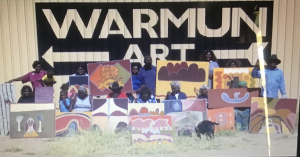 Part of our ongoing atonement is the observance of National Sorry Day on 26 May each year. This day was inaugurated in 1998, one year after the tabling of a report about the removals of Aboriginal and Torres Strait children from their families.
Part of our ongoing atonement is the observance of National Sorry Day on 26 May each year. This day was inaugurated in 1998, one year after the tabling of a report about the removals of Aboriginal and Torres Strait children from their families.
As well as being a day of repentance for the cruel injustices of the past, it is a day that highlights some of the wonderful achievements of Aboriginal people in numerous fields of endeavour, The Arts, Music, Dance, Poetry, Theatre, Comedy, Law, Education, Medicine, Health, Literature, Painting, Traditional Languages, Bush Knowledge, Care of Land.
In some circumstances of our everyday lives, the word ‘sorry’ is not easily said, but once it is uttered with sincerity, a way is open for reconciliation, for a more genuine encounter with the other, for ongoing acceptance of mutual shortcomings. To say sorry is to trust oneself and one’s story to the other’s understanding. The genuine encounters of each day in the flow of what happens, leave space for people to grow and accept one another’s limitations. Reconciliation is happening in this gradual and sometimes painful way.
As I reflect with Sisters who work closely with Aboriginal people in remote communities and in urban parishes and settings, I hear them attest to this honesty and mutuality in their relationships. Genuine appreciation of one another, being sorry and saying sorry weave through the ups and downs of everyday encounters. This is reconciliation in the everyday; part of being immersed in ’the smell of the sheep’. It happens on the verandahs, in the Community, the classrooms, the roads, on the bush trips, in the office, the shop, the Art Centre, in times of death, grief and loss, imprisonment and release, resolving conflict, in the talking circle, sitting around corroborees, songs and stories, women’s and men’s business shared and honoured.
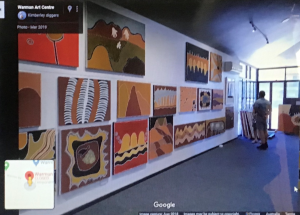 Specifically, targeted programmes can be very beneficial in healing the traumas, and consequent violent behavior, carried from the cruel practices inflicted on past generations. ‘Healing the Cause of Violence Programme’ organised by Sr Alma Cabassi, for the people of Halls Creek and Balgo, is one such programme. This has been run with the support of small grants from Mary MacKillop Today and currently a significant grant from The West Australian Police Force. The sessions are conducted by an experienced psychologist, who presents learnings that help people understand the cause of their reactions and violent behaviours. This programme suits Aboriginal learning styles, Sr Alma says, as it includes illustrations and stories.
Specifically, targeted programmes can be very beneficial in healing the traumas, and consequent violent behavior, carried from the cruel practices inflicted on past generations. ‘Healing the Cause of Violence Programme’ organised by Sr Alma Cabassi, for the people of Halls Creek and Balgo, is one such programme. This has been run with the support of small grants from Mary MacKillop Today and currently a significant grant from The West Australian Police Force. The sessions are conducted by an experienced psychologist, who presents learnings that help people understand the cause of their reactions and violent behaviours. This programme suits Aboriginal learning styles, Sr Alma says, as it includes illustrations and stories.
Please continue reading below:
Read the entire article here (PDF)
Margaret Keane rsj
54th World Communications Day 2020
May 24, 2020When we look back at 2020, we will recall how the year began with the daily news focussed on the devastation caused by the bushfires burning across our country.
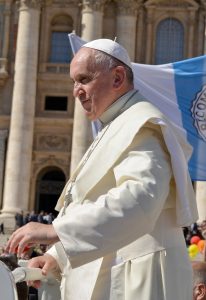 Meanwhile, silently, a new danger threatened, one that would call forth reserves of courage and commitment from us all. We will look back and remember media reports that highlighted the best and at times the worst of humanity. We will remember the selfless dedication of emergency workers who put their lives on the line, and we will be grateful that our media outlets offered timely and factual communication to assist in managing bushfire evacuations and the COVID-19 lockdowns.
Meanwhile, silently, a new danger threatened, one that would call forth reserves of courage and commitment from us all. We will look back and remember media reports that highlighted the best and at times the worst of humanity. We will remember the selfless dedication of emergency workers who put their lives on the line, and we will be grateful that our media outlets offered timely and factual communication to assist in managing bushfire evacuations and the COVID-19 lockdowns.
Pope Francis, in his letter for World Communications Day 2020 chose the theme:
Life becomes history
Little would he have known that his letter, written in January before the world had woken to the gravity of the situation we were about to face, directs our attention to the importance of storytelling. Pope Francis states, …
 The lack of opportunity to celebrate at Easter and ANZAC Day due to the pandemic lockdown brought us together in new ways as communities of faith and belief. Once again, the media played an important role in bringing these new ways into the intimacy of our own living rooms. We began to discover that we were not isolated, but instead, were part of a global community that could give honour and praise and celebrate the beliefs and values at the heart of our community. Time will tell if these new ways will become woven into the fabric of our lives and culture.
The lack of opportunity to celebrate at Easter and ANZAC Day due to the pandemic lockdown brought us together in new ways as communities of faith and belief. Once again, the media played an important role in bringing these new ways into the intimacy of our own living rooms. We began to discover that we were not isolated, but instead, were part of a global community that could give honour and praise and celebrate the beliefs and values at the heart of our community. Time will tell if these new ways will become woven into the fabric of our lives and culture.
Pope Francis reminds us that in Jesus God intervened in human history and reworked the fabric of human life.
As we celebrate World Communications Day 2020, we thank God for the media that has helped us retell our stories. We pray that those entrusted with this sacred duty will do so with integrity and honesty for the sake of the common good and be fearless in standing with the vulnerable and those most in need.
Mary Ellen O’Donoghue rsj
Image: Digitization Transformation by Gerd Altmann obtained from Pixabay. Used with permission.
Image: Pope Francis by Annett_Klingner obtained from Pixabay. Used with permission.
Ascension of Jesus 2020
The Ascension presence and absence, love and loss, stand apart and remain together.
 There is a rock on the ground in the Holy Land which holds the semblance of a footprint and the tour guides tell us this is where Jesus’s foot last touched the earth before he went up to heaven. The writer of Col 3:2 admonishes us to “Put your minds on things that are above, not on things that are on earth.” No doubt you’ve seen fervent sportsmen and woman cast a gaze upward as they murmur thanks or sign themselves after a goal. I can understand that the Jewish people with their ancient cosmology would have the belief that heaven is above, but I hope that bit by bit we can come to see that heaven is not up but here, because God is here.
There is a rock on the ground in the Holy Land which holds the semblance of a footprint and the tour guides tell us this is where Jesus’s foot last touched the earth before he went up to heaven. The writer of Col 3:2 admonishes us to “Put your minds on things that are above, not on things that are on earth.” No doubt you’ve seen fervent sportsmen and woman cast a gaze upward as they murmur thanks or sign themselves after a goal. I can understand that the Jewish people with their ancient cosmology would have the belief that heaven is above, but I hope that bit by bit we can come to see that heaven is not up but here, because God is here.
The thing about the Ascension is that Jesus is gone and is still present. He disappears and says at the same time “I am with you always.” There is absence and there is presence, there is love and there is loss and absence makes the heart grow fonder. Many of us have experienced this with our loved ones. We lose them to distance or in death and later we are very conscious of their presence at different times, helping us, encouraging us. So it is with Jesus, the Christ.
We are often reminded that Jesus has gone to a better place and we are all to follow. The danger here is to see this place where we are is not permanent therefore not important. This may in part be the reason why we have treated our Common Home so badly as Pope Francis points out in Laudato Si.
This reminds me of our COVID-19 reality when we stand apart and yet remain together. We practise social distancing and at the same time find all kinds of ways of being together, like the many great performers who “came together” in April while remaining in their gardens or in their living rooms to entertain us, show their appreciation of the front line people and ask corporations to donate to the WHO fund against COVID-19. Here is Christ present among us, the generous Christ, the creative Christ, the compassionate Christ, the beautiful Christ.
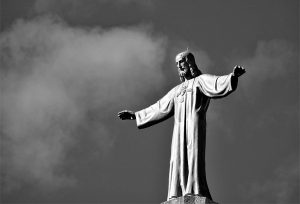 He told his apostles that he was going and that he had to go because otherwise the Paraclete could not come. Perhaps they thought they would rather have Jesus than the Paraclete anyway, not realizing that it was another way of having Jesus, of having His Spirit, less tangible but no less real for that. Gerard Manly Hopkins has a poem which begins with “As kingfishers catch fire…” The second stanza explains beautifully how Christ is present, here and now…
He told his apostles that he was going and that he had to go because otherwise the Paraclete could not come. Perhaps they thought they would rather have Jesus than the Paraclete anyway, not realizing that it was another way of having Jesus, of having His Spirit, less tangible but no less real for that. Gerard Manly Hopkins has a poem which begins with “As kingfishers catch fire…” The second stanza explains beautifully how Christ is present, here and now…
Photo: Statue of Jesus by Juhasz Imre obtained from Pexels. Used with permission.
From Sleeping Rough to Sleeping Safe
May 21, 2020On Monday, 20 April the ACT Government announced a series of grants to support vulnerable people, in the Australian Capital Territory (ACT), in the areas of homelessness or domestic and family violence arising from the COVID-19 pandemic.
CatholicCare Canberra, to whom the Sisters of Saint Joseph had transitioned the MacKillop House ministry, was one of the recipients. CatholicCare received a grant of $150,000 to provide accommodation at MacKillop House, “to respond to the growing need for safe supported housing for women and children who are experiencing homelessness during COVID-19”.
This house transition was recently reported in the Catholic Voice as an article titled ‘From sleeping rough to sleeping safe’ by Felicity de Fombelle.
Noelene Quinane rsj
You’re invited to read the article on the Catholic Voice website below:
From Sleeping Rough to Sleeping Safe
Josephite Earth Sustainability Charter
We are proud to launch online the Josephite Earth Sustainability Charter.
Context of the Josephite Earth Sustainability Charter:
- Recognition that all members of the human community are invited to live in increasingly sustainable ways;
- As members of a religious community we are called to forms of sustainability which link with our faith tradition;
- Pope Francis’s 2015 encyclical, Laudato Si, situates our faith response and lived reality as being inseparable and integral;
- With the encouragement of the CLT, the Congregational Eco-Spirituaity Team has thus developed the Charter as a resource which connects Josephite Charism and sustainability in ways which reflect the integral ecology framework of Laudato Si;
- Our Josephite document, based on the Laudato Si framework, was developed through a consultative process within the Congregational EcoSpirituality Team from July 2018 to April 2019.
The resultant Josephite Earth Sustainability Charter is a living document and a further step in encouraging all within the Josephite community toward increasingly sustainable practices.
Irene McCormack Reflection
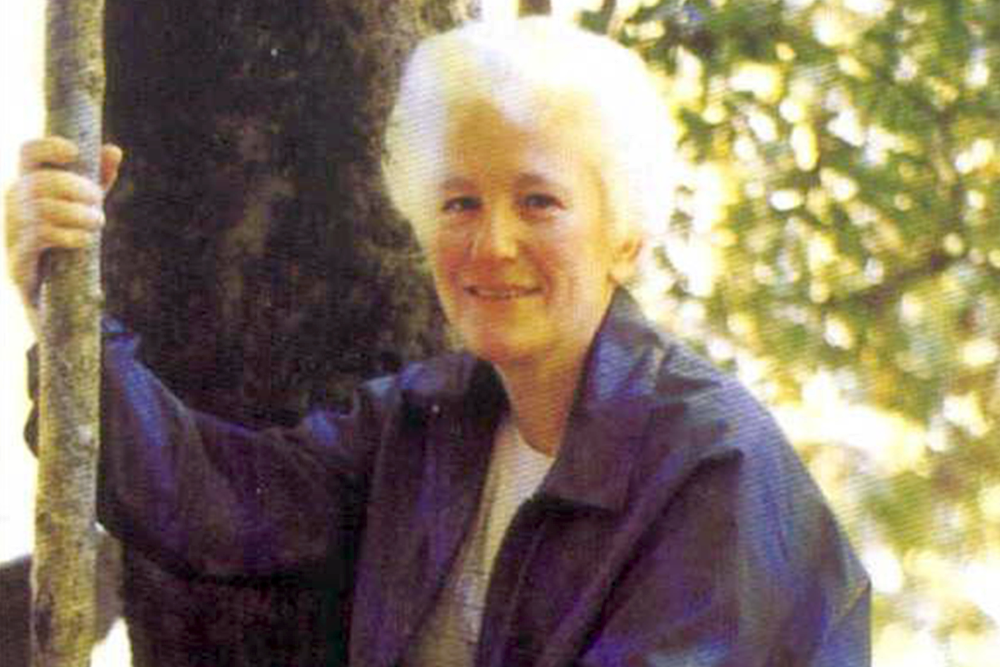
Irene McCormack, Sister of Saint Joseph, killed by Shining Path Terrorists in Huasahuasi on 21 May, 1991.
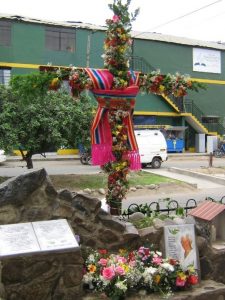
If you go into Google, you will find a web page for Irene McCormack, Sister of Saint Joseph, killed by Shining Path Terrorists in Huasahuasi on 21 May, 1991. In El Pacifico there is a large cross which is decorated with flowers every anniversary and carried in procession from the Eucharist in the Church to be replaced in its rocky monument with joyful songs. In Huasahuasi there is a march through the streets for justice and peace with children from various schools, followed by Eucharist and a walk to her grave in the cemetery on the hill. And why? Because she was killed by the terrorists?
I don’t think that is the most important thing about Irene. I believe that her life was much more important. Long before her life was taken her life was given. That’s why she is remembered so fondly.
In Australia she was a dedicated educationalist with a very strong sense of social justice. I witnessed this at New Norcia where Irene hatched many schemes to help those less fortunate, fostering this attitude in the students at the same time.
In Peru, Irene first worked in El Pacifico, a suburb of Lima. Here she assisted in the Parish with the Family Catechesis programme, befriending the people, joining in their lives and sharing their joys and sorrows. Here she is fondly remembered as a dedicated Josephite, with a ready smile, loving life and sharing the Peruvian passion for dancing. With one family she formed part of the family football (soccer) team playing in the cul-de-sac in front of their house. Others remember her on Mother’s Day taking a red rose to the mothers in the catechesis programme. Some who never knew her pray regularly at her cross in the street.

Irene moved to Huasahuasi and was living with Sr Dorothy Stevenson when they made the decision, like many other Priests and Religious throughout Peru, to remain with the people in the villages to support them in what is now called “The Years of Terror”. Here Dorothy worked with Caritas, among other things, and Irene taught many of the older women to read and write and ran homework classes for the children. Eight of these Priests and Religious across Peru were killed by the Terrorists with their memories honoured in the labyrinth of stones bearing also the names of tens of thousands of the other victims.
Her death, along with that of Noe Palacios Blancos, Agustín Vento Morales, Pedro Pando Llanos and Alfredo Morales Torres was a moment of horror for the people of that village. Around 30-40 people were killed in that village including the mayor, councillors, the baker, the owner of the petrol station and the man who brought the radio to the village – all people who showed initiative in supporting the community. Each time we honour Irene we honour also those four men.
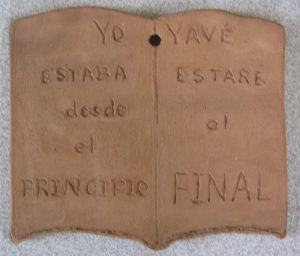
We know that Irene was frightened during her time in Huasahuasi. We also know that during a retreat in January 1991 she experienced the gift of trust more deeply than ever before. She made a clay object in the shape of an open book on which she wrote the words in Spanish: YO YAVE ESTABA DESDE EL PRINCIPIO. ESTARE EL FINAL – I Yahweh was from the beginning and will be until the end, not distant, but with her. After the retreat she wrote to a friend, “Thanks be to God I feel at peace and ready to live without fear. But I don’t take this grace lightly. I pray for it every day.”
At some time in Peru she wrote this morning offering which also reveals something of her relationship with God, how God was working in her.
So today i accept all as gift
And ask to find you Lord,
The giver in the gift.
I choose to face life without fear
And to live wholeheartedly
In each present moment.
May my heart sing today
A song of loving, grateful praise.
Amen.
I am God’s work of art.
I am precious in his sight.
I wonder which of these thoughts came to mind as she lay face down on the plaza with the four men anticipating being shot as she’d seen others shot. I wonder how she experienced Yahweh with her at the end.
Frances Maguire rsj
Sr Edith Prince Rite of Committal
May 20, 2020Sister Edith Prince entered eternal life on 11 May 2020.
We celebrate and give thanks for the life of Sister Edith.
Sister Edith Prince Liturgy Booklet (PDF)
Rite of Committal for Sister Edith Prince (PDF)
